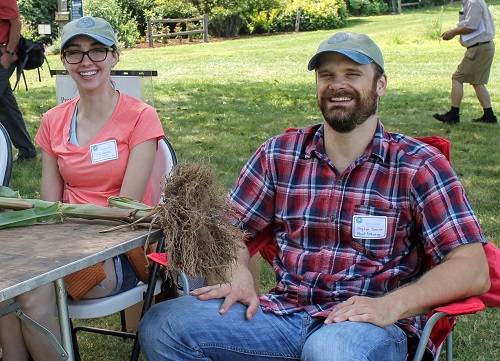Thanks to a new technique developed by plant pathologists in Connecticut, scientists now have access to an affordable and effective tool to facilitate the study of the entire non-bacterial microbiomes of any plant species.
Like humans, plants have microbiomes. As plants grow, they recruit beneficial microorganisms from the surrounding soil to colonize the roots. Most plant microbiome research focuses on bacteria and fungi, though there are many other microorganisms that can impact plant health, such as nematodes, mites, protists, and fungi.
However, not much is known about the impact of these other microorganisms, in large part because of technical limitations. One such limitation is that samples from plant roots or tissues are full of plant DNA, which overrides the DNA signal that scientists use to detect specific microorganisms.
To more accurately sequence and identify the DNA from nematodes, mites, protists, and fungi, scientists from The Connecticut Agricultural Experiment Station and the University of Connecticut adapted a technology known as “peptide nucleic acid (PNA) clamps” to block plant DNA. They published their results in Phytobiomes Journal.

“These clamps allowed us to examine the entire non-bacterial microbiomes with minimal contamination from the plant itself,” explained first author Stephen Taerum (in photo along with undergraduate student Katie). “By adding the clamp, we were able to get three times the sequence information from each plant sample and detect thousands of sequences from rare microorganisms that were otherwise undetectable.”
The clamp they designed blocked DNA from corn, wheat, sorghum, and barley. With small changes, this method can be used to develop clamps that block DNA from other plant species.
“It’s a technique that adds only small change to the type of methods many researchers are already using and reveals the presence of many new and different organisms, so we hope people will be encouraged to try it,” added project leader Lindsay Triplett. “We are also very accessible, so we encourage researchers to contact us with any questions about PNA clamps.”
Triplett, Taerum, and colleagues are now focusing their studies on the role of protists in the rhizosphere microbiome, with the hope to build upon the rich foundation of research laid by marine, soil, and plant protistologists around the world.
